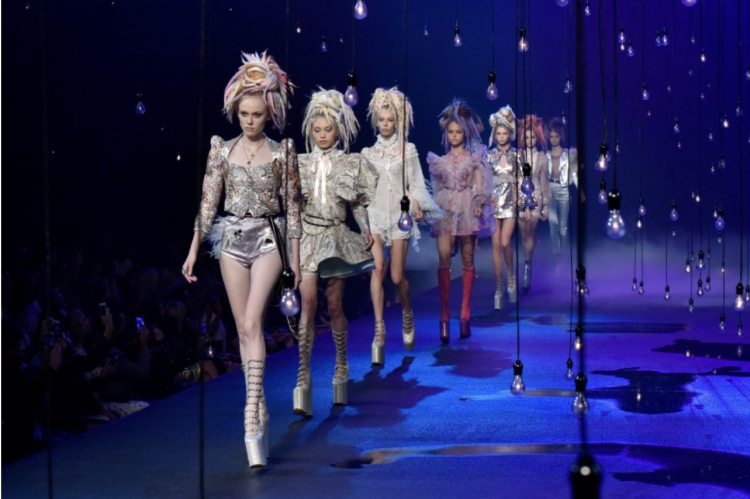The Fashion Industry Is Pretending To Be Self-Aware

Almost every major fashion brand has dipped their toe into the pool of controversy. From Gucci’s ‘Indy Full Turban’ in 2019 to Prada’s 2018 release of ‘Otto Toto’, many of the critiques these labels receive are about cultural insensitivity and appropriation. While criticism is unavoidable, cultural insensitivity is, which begs the question of why appropriation is commonplace within the fashion industry. The lack of diversity in Fashion’s biggest voices results in a lack of ability to recognize when cultural insensitivity could be at play.
In 2018, the Italian luxury fashion house, Prada, released a monkey keychain called, Otto Toto, which strongly resembled the anti-Black caricature, Sambo. Unsurprisingly, the major fashion brand faced backlash, particularly regarding the negligence involved in the design and approval of the Pradamalia keychain character. Like many brands that have experienced public backlash, Prada made a reactionary adjustment when faced with accusations of casual racism, by creating a Diversity and Inclusion Advisory Council
Thanks to #blackface @Prada, now you can take #sambo home with you for the holidays #StopRacism #StopBlackface #StopPrada pic.twitter.com/5t2cvosLIF
— T*itter is over (@lawyergrrl) December 13, 2018
Reactionary adjustments are a common tactic for corporations facing public controversy. However, denouncing racist imagery by creating a DE&I initiative is as helpful as slapping a bandage onto an ongoing issue that cuts much deeper. It is hard to have faith in Prada’s DE&I bandage when similar issues and responses have happened, and continue to happen, without any long-term progress.
Gucci faced similar backlash in 2019 with their balaclava , which not only resembled blackface imagery but was also released during Black History Month. While Gucci responded to the backlash with an internship program aimed at increasing diversity within the company, the major fashion house continued to make the same mistakes. That same year, Gucci released their ‘Indy Full Turban’ that cost nearly $800, monetizing an important Sikh article of faith. When these high fashion brands repeatedly make the same mistakes, they expose their lack of awareness on underlying, structural issues. When the same brands create garments that clearly resemble historically or culturally significant symbols, without a genuine understanding of their origin, they become insensitive and distasteful.
Does anyone wanna explain to me why @gucci thought selling a turban for $790 was a good idea? @Nordstrom
This isn't a "trademark style." This is not some "fashion accessory."
This is just very-off. pic.twitter.com/hVBIVvb9Ic— Naureen Singh (@Naureenksingh) May 14, 2019
People of color have yet to find a strong foothold as creative leaders in the fashion world. Aside from the few Black creative directors, like Olivier Rousteing and the late Virgil Abloh , there is a lack of cultural diversity at the top of the fashion industry. According to a 2021 survey on the DE&I of the fashion industry, around 50% of employees of color have found the fashion industry inequitable. Without diversity of thought, which can come from having more people of color in the higher ranks of the industry, it is harder for new, critical ideas to come to the fore.
Prada’s council and Gucci’s internship are all a step in the right direction, but it took public backlash for these brands to re-evaluate their creative choices, inspired or not. Major fashion brands are forced to deny, time after time, intentional racism within their products and marketing. Their current, ongoing, solution is to react to backlash and make public statements abhorring racism, but these issues will continue to persist unless the industry model changes, and minority representation increases. Until then, these brands’ apologies will be less than believable to the savvy consumer.
Lack of diversity is not exclusive to the fashion industry. Recognizing that there is an issue of diversity in the fashion industry, however, needs to be highlighted because of the industry’s prominence in the influencer field. Influencers sell a lifestyle through fashion, and when there is a lack of diversity and representation in these messages, issues of cultural insensitivity and appropriation will remain common.
People of color have a voice in the industry, but it is yet to be at the level in which their voices are respected. While there may be an effort in increasing diversity, the voices being listened to at these major luxury fashion houses still lack the diversity needed to increase brand self-awareness.







